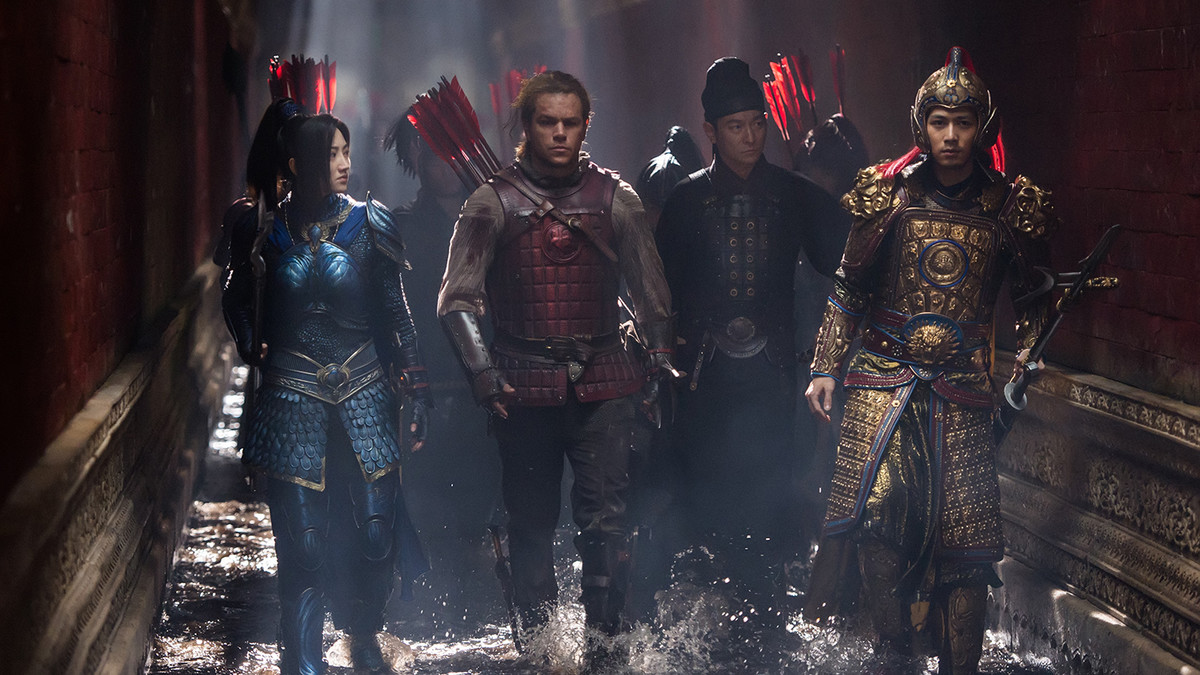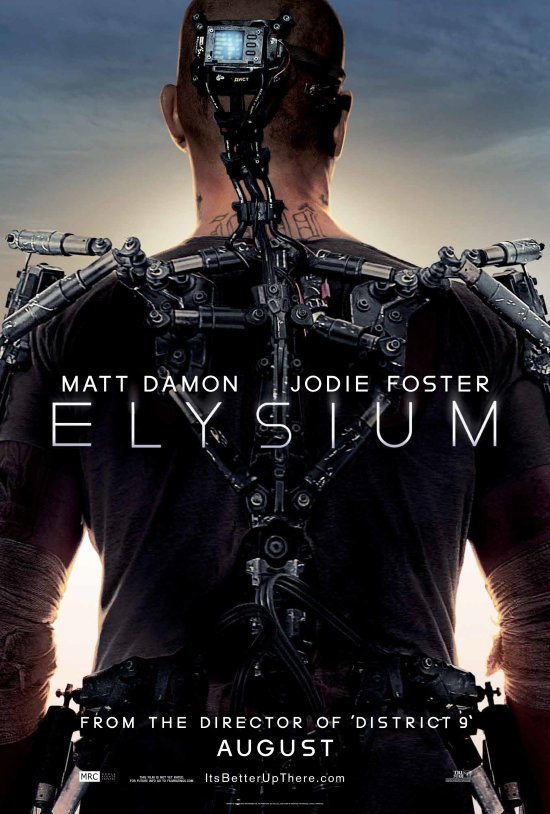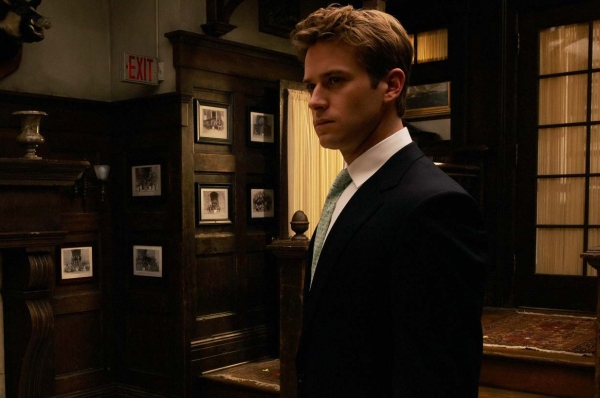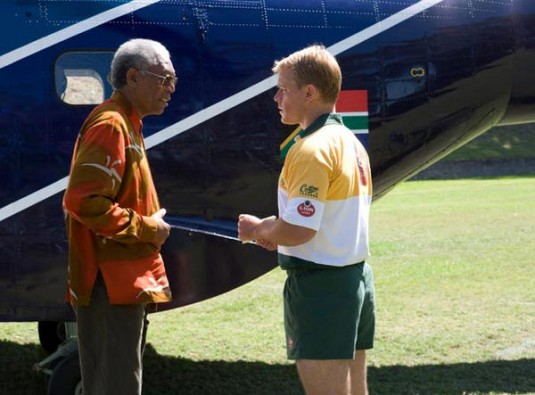
This review originally appeared as a guest post on 10 Years Ago: Films in Retrospective, a film site in which editor Marcus Gorman and various contributors revisit a movie on the week of its tenth anniversary. This retro review will be a bit more free-form, recappy, and profanity-laden than usual.
“When Chaney is taken, he’s coming back to Fort Smith to hang. I’m not having him go to Texas to hang for shooting some senator.
-“It is not important where he hangs, is it?”
“It is to me. Is it to you?”
-“It means a great deal of money to me. It’s been many months’ work.”
“I’m sorry that you are paid piecework and not on wages, and that you have been eluded the winter long by a halfwit.”
In our recent podcast review of Kelly Reichardt‘s 2020 film First Cow, I reductively summarized the canon of the American Western, by praising that film’s setting and narrative because, “It’s not California, it’s mostly not about men with guns, and it’s not all taking place in one 30-year period following the California Gold Rush”. In retrospect, I must admit that I was knowingly doing that canon a disservice, because- however much I scoff at American mythmaking, which began in the rhetorical drive toward reinvention and conquest that we called manifest destiny, and continued past the violence and broken treaties toward a full century of colonialist nostalgia – it is a genre that I’ve personally enjoyed for most of my life, and which spans a great many times and places. This enjoyment has persisted even as I’ve had those myths peeled away and deconstructed one by one, a process of reexamination that began – in both academia and popular culture – well before I was born. One of my favorite Westerns from my lifetime, the 1993 George P. Cosmatos film Tombstone (which takes place in 1880s Arizona) was as much about providing a nostalgic filter for modern-day gang violence (in the form of an organized gang of “cowboys” identified by their characteristic red sashes) as it was about reenacting the shootout at the O.K. Corral, or denying Val Kilmer a well-deserved Oscar. In addition to being a recent (27-year-old) example of a revisionist western that I enjoyed, it came to mind because one of its most memorable scenes, a late showdown in a knee-deep river, may have been loosely inspired by the mid-climactic confrontation between 14-year-old Mattie Ross and her father’s killer, Tom Chaney, which appears in both adapted versions of True Grit.
True Grit is an interesting case for a few reasons – for starters, it’s explicitly not about westward expansion, but rather about run-of-the-mill law and order in a place where it should rightfully exist as a measuring stick of civilization. The film takes place in and around rural Yell County, Arkansas, a state in the Deep South with a population of a little over 800,000 in 1880 when the film takes place (more than 200,000 more than present-day Wyoming). The film, adapted by the Coen Bros in 2010 from a 1968 novel by Charles Portis, was adapted previously into a 1969 film starring John Wayne, Glen Campbell, and Kim Darby as 14-year-old rancher’s daughter Mattie Ross. When she was cast, Darby was a 22-year-old mother, styled with what would’ve been regarded at the time as a short-cropped boy’s haircut (similarly used for Mary Martin as the title character of the 1954-60 musical/telecast version of Peter Pan). The Coens took the novel step of casting a real teenager, Hailee Steinfeld, who was the product of a massive talent search and had only ever appeared in a handful of shorts before this film. And while it’s fair to say that Jeff Bridges and Matt Damon embody their characters in similar ways to Wayne and Campbell in the ’69 film (Damon in particular seems to lift many of his mannerisms and accent straight from Campbell), Steinfeld is the reason why this film works so well, along with Portis, the late author of the novel. Because it wasn’t until this week, when I watched both versions of the film and perused a copy of the novel for the first time, that I realized just how little of the script and dialogue belongs to the Coens, with much of it lifted wholesale from the novel, and only the occasional little tweak or rearrangement or inner thought being spoken aloud that belongs to the Coens. Which is fine, honestly. True Grit is one of the Coens’ funniest films, but Ethan Coen was the first to admit in a 2010 interview that much of that humor came directly from the novel, and part of his desire to re-adapt the novel was to restore the humor that was lost in the ’69 version.

The novel takes place from young Mattie’s perspective as she locates and hires the meanest US Marshal she can find, Rueben J. “Rooster” Cogburn (Bridges), to track down Tom Chaney (Josh Brolin), a drunken scoundrel with a powder-marked face who murdered her father as he tried to stop him from attacking a table of cardplayers to whom he had lost money moments earlier. Mattie is both exceptionally capable and knowledgeable of both law and financial matters, details which are established in a handful of introductory scenes in the ’69 film, but which come essentially out of nowhere in the 2010. Steinfeld is not only completely in charge of these interactions, but threatens multiple people with the litigious retribution of her family’s lawyer, J. Noble Daggett, who is voiced in the film by J.K. Simmons, as the only indication that the girl’s threats to sue and assert her rights are anything but bluster. Although both films contain a line which perhaps helps to explain the girl’s claim of authority – she defends herself against abandonment to a “congress of louts” (a Coen Bros line) by identifying her name and hometown, and asserting, “My family has property and I don’t know why I am being treated like this.” It’s not the girl’s fault that she comes from a place of wealth and privilege any more than it is her fault that her father was murdered by a hired man. But it is a bit of a reminder that wherever law and order are lacking, only crimes against the wealthy will be properly met with justice. This also relies on a prior assumption that the institutions of justice will, if brought to bear on the situation, truly result in a just outcome.
And this is where True Grit (take your pick from the novel or either filmed version) really shines, allowing Mattie to constantly assert her piety, innocence, and clear-eyed sense of morality, while also prodding her naïveté and ending on a note that perhaps suggests that her vendetta was not so well-conceived. As I’ve come to expect from the Western genre, all of the principal characters in the film are white, and the film’s treatment of race is confined to a singular punchline during a triple-hanging scene in front of the Fort Smith courthouse in the film’s first act. This an interesting scene because it is an instance where the adaptations diverge quite sharply, with the ’69 version containing no dialogue from the condemned men, whereas the 2010 opens on one giving a lengthy speech, begging the crowd to learn from his mistakes and be kind to his family, and lamenting his lack of proper instruction as a child that led to him murdering a man “in a trifling quarrel over a pocketknife”. A second man says he is on the gallows because he “kilt the wrong man”, and he sees men in the crowd worse than he is. Both of these speeches are taken almost verbatim from the novel, if slightly out of order. And then, in a Coen Bros punchline, the third man, an unnamed Native (who in the novel professes his faith in Jesus Christ and compares himself to the thief on the cross) only gets out, “Before I am hanged, I would like to say…” before the hangman shoves a bag onto his head. Both adaptations contain other little nods to unequal justice, but they’re subtle. The ’69 version handles this slightly differently, featuring a bit of side conversation between Mattie and a talkative woman in the stands, who points out Judge Parker sitting atop the courthouse roof, and says that he watches every one of his hangings out of a sense of duty. Kim Darby’s Mattie visibly scoffs at this, and dismisses the woman’s declaration by saying, “Who knows what’s in a man’s heart?” What is perhaps unspoken is that Mattie thinks Judge Parker may just like watching people die. Rooster refers to Judge Parker more than once as a “carpetbagger”, and given that this is 1880 Arkansas, it’s fair to say that this characterization carries a lot of the baggage of racist campaigns of terrorism visited upon former enslaved people in this region. Combine this with Rooster’s tendency (asserted to Mattie by the town sheriff, and confirmed under oath on the witness stand) to kill most of the people he is sent out to retrieve, and it’s quite easy to find some modern resonance in this story. Because a huge part of the American frontier myth has always been the concept of throwing together a posse to avenge ourselves, the civilized folk, upon the outlaws and savages who have done us wrong, without any judges or rules of evidence getting in the way. This is perhaps America’s oldest myth, and it persists into the cop genre to this day, because even as we insist upon a desire for justice, we still can’t get enough of the one-man killing machine who Gets Things Done (because he has True Grit, if you like). Even if in practice, we know what this looked like even a century ago. It looks like decades of lynchings and Jim Crow juries refusing to convict their perpetrators. It looked like the terrorist bombing and massacre of Black Wall Street in Tulsa, 1921 – an event I had never heard of in 2010, and which is now HBO TV fodder. In fact, between Watchmen and Westworld, wherein the western genre is rendered literally as a sex/murder nostalgia party with robots, I daresay HBO may have its real measure.

I still regard True Grit as one of the Coens’ funniest films (owing a great deal to Jeff Bridges‘ performance as Rooster, which vacillates between buffoonish and menacing with remarkable skill). But its punchline is murder of the same, thoroughly justified sort that exists throughout the frontier myth, directed at a conveniently despicable man, Tom Chaney, whom the Coens actually make even more despicable in the 2010 version. In the novel, when Mattie first confronts Chaney in the creek, he immediately expresses regret for killing her father. The ’69 version gives no such dialogue to Jeff Corey‘s Chaney, who merely played him as cocky in his refusal to go quietly (prior to Mattie pulling the dragoon pistol and gut-shooting him). The 2010 version also starts with cockiness and ends with attempted murder by Chaney, but the Coens have Josh Brolin say aloud that he truthfully doesn’t regret killing Mattie’s father at all. Like I said, conveniently despicable. And now, disposable, because he flatly refuses to return and face justice, and he has no regrets. All that remains is to put him in the ground, which Mattie contributes to in both films, albeit a bit differently in each. In the ’69 version, it’s a perfunctory act of self-defense (occurring within a few seconds of Chaney clubbing LaBoeuf in the head), and it doesn’t even finish Chaney off. The shot sends Mattie tumbling into the snakepit to be threatened by a bleeding Chaney from above, before Rooster returns to finish him off. In the 2010 version, Mattie struggles and yanks LaBoeuf’s fallen Sharps carbine from Chaney’s grasp, orders him to his feet, and blasts him off a cliff, before tumbling into the snakepit, as did her predecessor. The difference between these two scenes is subtle (and happens so quickly in both films that I had to rewatch each more than once), but I daresay the Coens are the winners here, sticking more closely to the novel (wherein Mattie’s fatal shot catches Chaney in the head rather than the gut), and putting the moral choice to kill, as well as its immediate consequences, firmly into Mattie’s hands. Or, as LaBoeuf might say, her hand. That’s what makes the upshot of this film work so well. For all the girl’s piety and sense of justice, her violent retribution against Chaney was ultimately unnecessary, and the circumstances were such that she was instantly punished for it, losing a limb for the rest of her life.

This is probably where I should say something nice about Roger Deakins’ cinematography as well as [Coen-alias] Roderick Jaynes‘ editing and Carter Burwell‘s hymnal-influenced score, because it is indeed this triad that makes the Coens’ take on this material so memorable, concluding with Rooster’s desperate midnight ride to save Mattie’s life, and layered throughout the film as it attempts to create a sense of wide-open spaces, isolation, and grandeur. One memorable montage of long fades (easily ten seconds apiece) starts with the trio traveling across the Arkansas prairie into the Choctaw Nation, with a rising crane shot, lush with cool blues and purples, panning upward to keep the riders’ heights uniform with the distant, silhouetted mountains as they ride toward the camera, with the slow fade ushering into a static, warm-hued shot as they ride away across grassland toward a broken line of low, rocky hills. The long fades continue, some to emphasize the position of the sun and the passage of time, some for the changing terrain, and some to highlight Rooster’s varied disposals of his waning supply of whiskey bottles. However shrewdly Mattie operates in the opening act, hiring Rooster was perhaps her least advisable maneuver, choosing the “meanest” marshal even as she is warned that he loves pulling a cork. When we see Mattie (played at age 40 by Elizabeth Marvel as well as a visual stand-in, Ruth Morris), she retains the same rather arbitrary sense of moral clarity, speaking cordially to real-life bandit Cole Younger (Don Pirl), but telling his Wild West Show partner, Frank James, to “Keep your seat, trash,” after the pair reveals that their show partner, Rooster, passed away three days earlier. This moment is straight out of the novel, and offers an explanation from POV character Mattie, who asserts that despite having similar body counts from their outlaw days, Cole Younger spent 25 years in prison for his crimes and expressed a bit of Christian regret, whereas Frank James was acquitted, despite likely pulling the trigger on innocent victims more than once. Hence, trash. But I’m not sure how much credit for irony I can really give this film, opening as it does on a Bible verse (from Proverbs, “The wicked flee where none pursueth”), and sandwiched between a pair of pious voiceovers which emphasize, if nothing else, how little Mattie’s experience changed her, merely ossifying moral tendencies that she possessed since childhood. This is perhaps the most enduring trope of the frontier genre – that a departure from what you regard as civilization is revelatory, but only of the sort of person you always were. And in that sense, the Coen Bros’ True Grit stands strong, even in the Western’s waning years.
FilmWonk rating: 8 out of 10

















